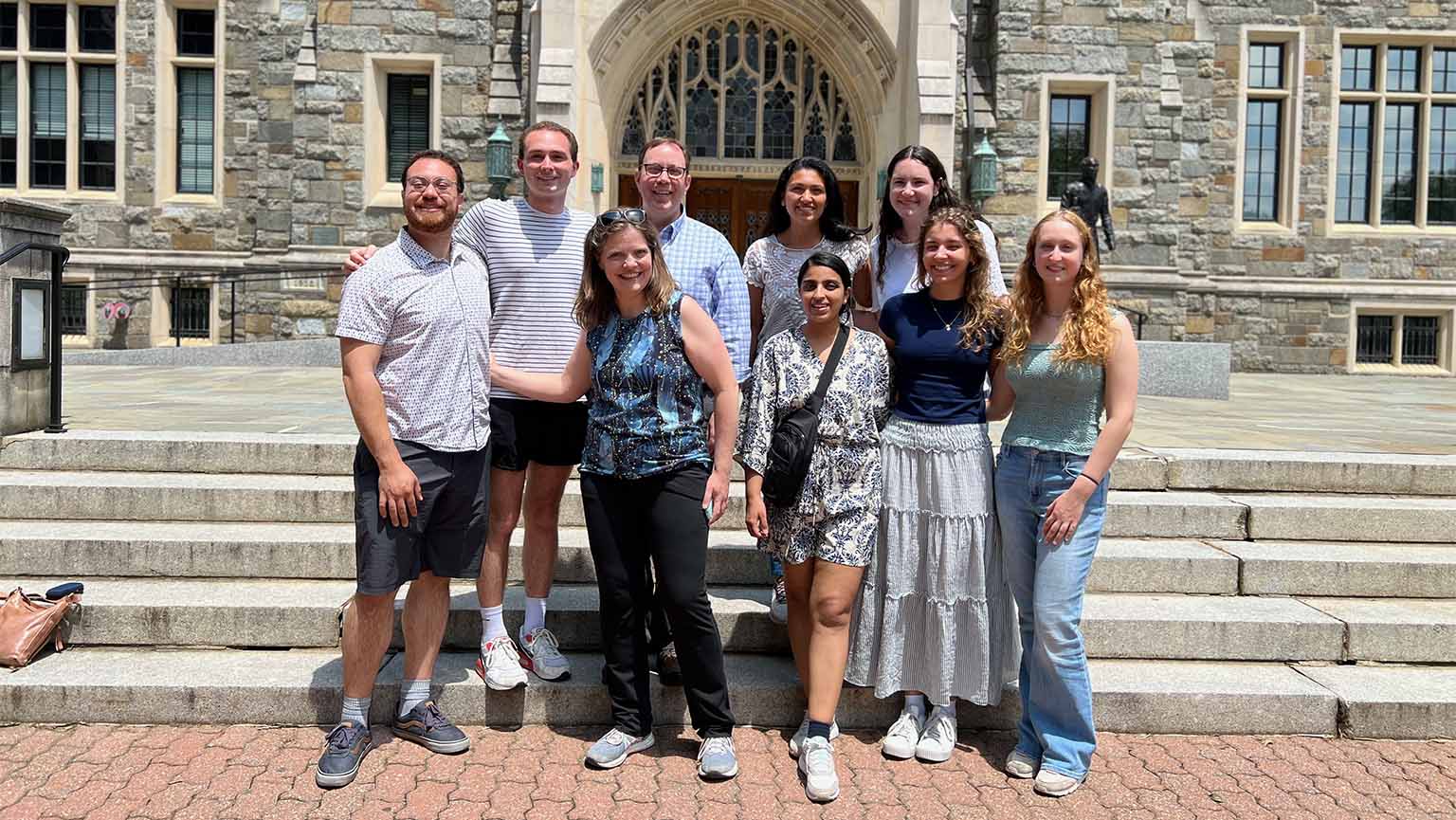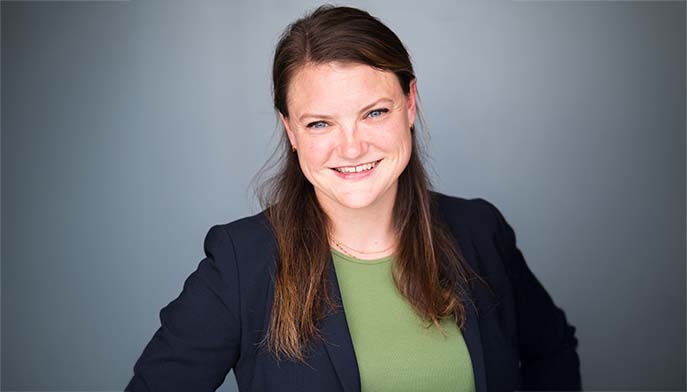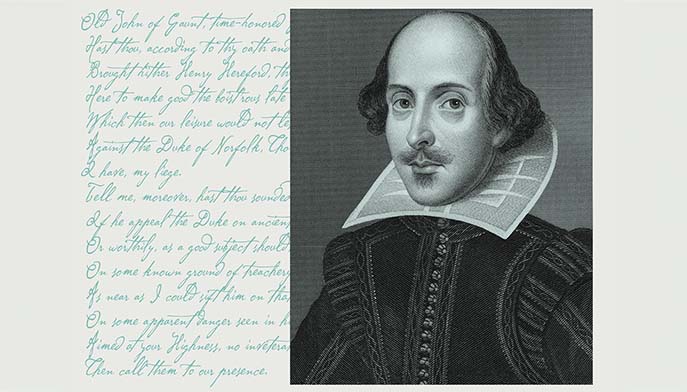Fairfield University College of Arts and Sciences students are making strides in scientific research, thanks to an innovative cross-disciplinary experience.
Led by Aaron Van Dyke, PhD, associate professor of Chemistry and Biochemistry, the initiative has allowed undergraduates to experience cutting-edge RNA imaging research. But this program isn’t just about honing technical skills—it’s about breaking boundaries between smaller institutions like Fairfield and larger research universities.
The heart of this collaboration took place at Georgetown University, where three Chemistry and Biochemistry majors—Rianna Mann ’25, Jenna Hanson ’25, and Kiera Cunningham ’26—immersed themselves in hands-on research with Prof. Esther Braselmann, the Clare Booth Luce assistant professor of Chemistry. For two weeks, the students worked side-by-side with Braselmann’s graduate researchers, mastering advanced techniques on instrumentation not available on Fairfield’s campus.
“This experience was enriching and gave me insights into graduate school and the impact of the research I had already done at Fairfield,” Mann said. “Sometimes it’s easy to lose sight of the main goal when you’re focused on streamlining lab processes. But seeing how our [RNA] probes were used in real-time applications gave meaning to all our efforts.”
Fairfield’s Van Dyke Lab has a reputation for fostering undergraduate research, but this cross-institutional initiative marks a significant leap forward. Georgetown’s facilities, such as the fluorescence lifetime imaging microscopy (FLIM) equipment and UV/Vis Spectrophotometer, opened new doors for the students. Cunningham noted how these advanced resources and the collaborative atmosphere enriched the experience.
“I had a very positive experience working in the collaborative environment at Georgetown,” said Cunningham “Adapting to a new research setting and working closely with graduate students gave me valuable insights into how research is conducted at a larger institution.”
In addition to technical mastery, the students faced challenges that stretched their abilities. Cunningham recalled initial nerves as she prepared to work with Georgetown researchers:
“I was nervous after reading some of the complex papers from the Braselmann group, but hands-on experience made things clearer. It taught me that not understanding everything at first is okay. With perseverance, even difficult topics become easier to grasp.”
This kind of persistence paid off as the students worked through intricate procedures, like RNA synthesis and bacterial culture, all while navigating the delicate handling required to prevent RNA degradation. “We had to sanitize everything carefully and use RNase-free hoods at every step,” Cunningham explained. “That kind of meticulous work takes patience, but it’s a skill that will benefit me in the future.”
For Mann, learning from graduate students was especially eye-opening. “They were great mentors and showed us new techniques and programs to analyze FLIM data. I’m still figuring out my career path, but gaining more lab experience will be useful—especially if I go into pharmaceutical development or disease research.”
Undergraduate researcher Sebastian Lis, who anchored the Fairfield leg of the collaboration, echoed these sentiments. “Even though I plan to attend medical school, research now feels like a meaningful career path that aligns with my goal of helping others,” Lis shared.
Though neither Mann nor Cunningham attended the 9th European Chemical Congress in Dublin, where Dr. Van Dyke presented their work, both emphasized how the experience at Georgetown gave them clarity about future academic paths.
“This experience gave me a clearer picture of what graduate school entails,” Cunningham said. “I had been uncertain about my next steps, but talking with the graduate students made the idea of pursuing a higher degree feel much more attainable.”
Programs like this demonstrate Fairfield’s commitment to undergraduate research excellence. By partnering with research-intensive universities, Fairfield is opening doors for students to gain valuable experiences, network with mentors, and engage in high-impact projects. The initiative reflects a broader trend in higher education—one where collaboration between smaller institutions and larger universities leads to richer educational outcomes.Ultimately, these students are returning to Fairfield with more than just new skills—they’ve gained confidence, clarity, and a deeper appreciation for research’s impact on medicine, science, and everyday life. As Cunningham explained, “I really enjoyed the research aspect of this program, and it gave me confidence in my desire to pursue a research-based career. Programs like this not only expand your skill set but also show you how much of an impact scientific research can have on the world.”
The strong outcomes of this collaboration were made possible by generous cross-institutional funding. “This transformative experience came to fruition because the Science Institute, the Fredrickson Family Innovation Lab, the Jean Dreyfus Foundation and the Clare Booth Luce Foundation recognized its potential,” said Dr. Van Dyke. “My job now is to build on this momentum so future Fairfield students will also have the opportunity for a summer at a sister Jesuit university filled with scientific and professional discovery.”
Fairfield’s partnership with Georgetown serves as a model for how cross-institutional collaboration can push the boundaries of undergraduate education, preparing students for the challenges—and rewards—of future scientific careers.




